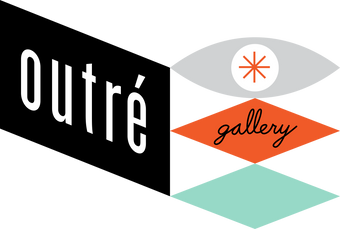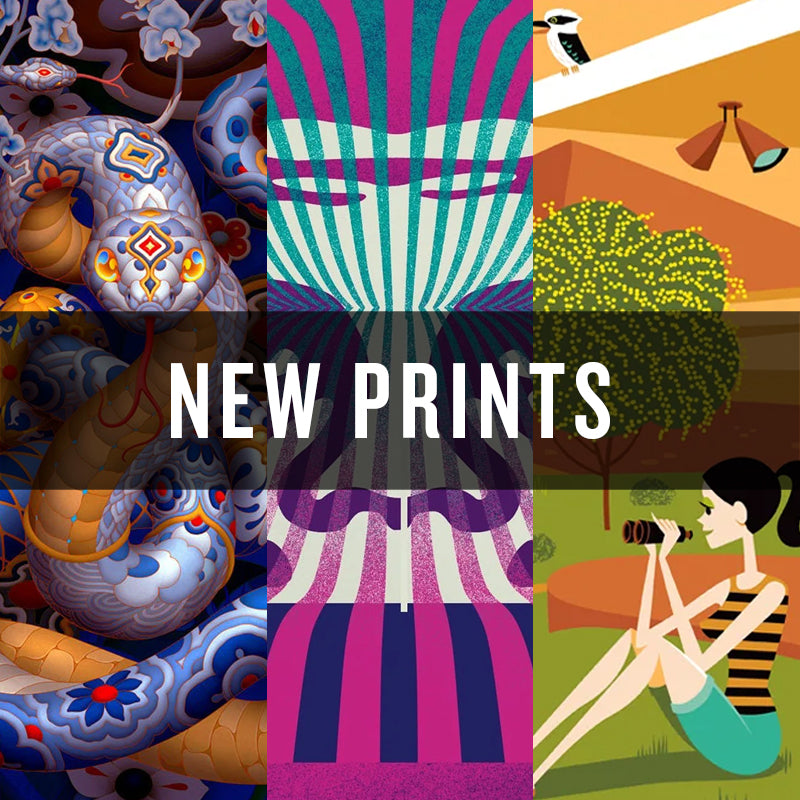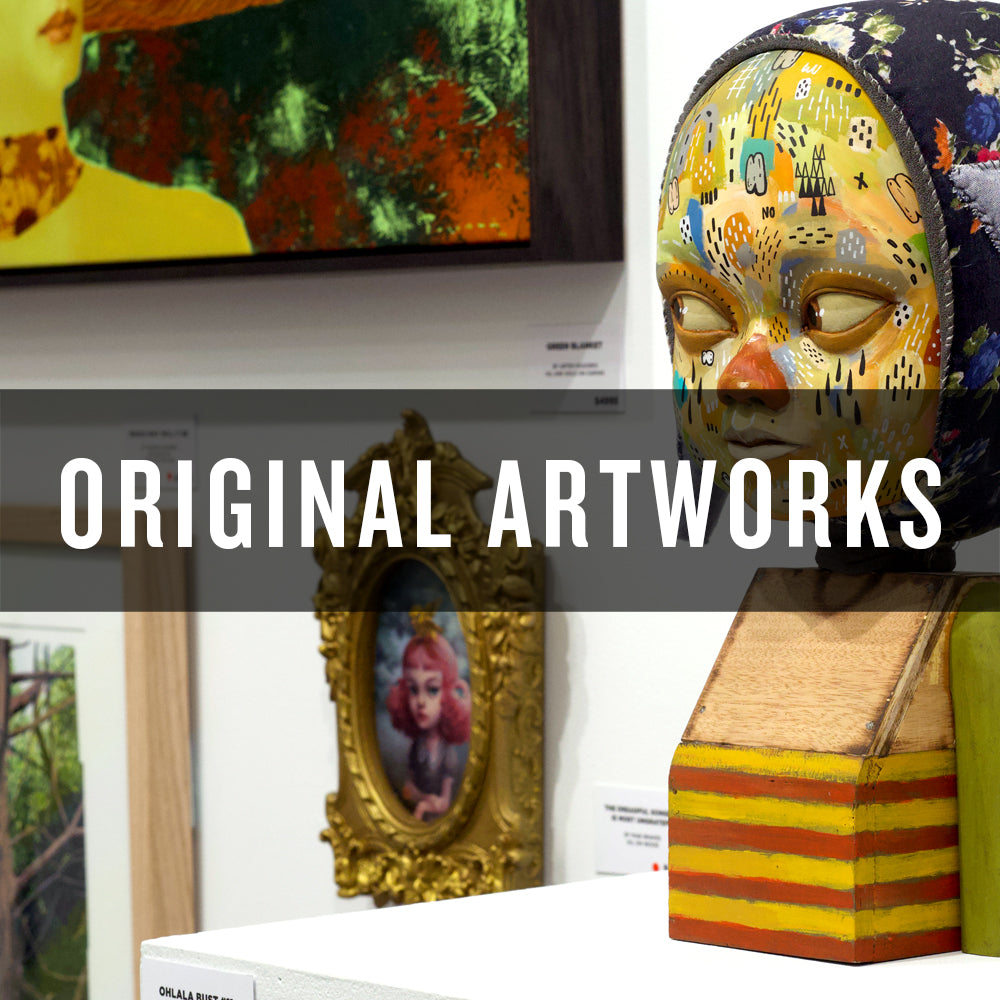
Jason Limon is a painter and sculptor that was born in San Antonio, Texas. In early 2007 he moved from a long career in graphic design to begin work as a visual artist exhibiting in galleries across the United States and parts of Europe. He has had solo exhibitions in New York, Albuquerque, and Chicago and has participated in a large variety of group exhibitions. His art has been presented in an array of publications and has received awards and accolades from Communication Arts, American Illustration and The Society of Illustrators of Los Angeles. In 2016, a toy based on one of his paintings won Toy of the Year award from the Designer Toy Awards in New York. He continues to reside in San Antonio, Texas with his wife and two daughters.
Interview by Louise McIntosh. Artworks by Jason Limon.
Your skulls are often surrounded by antiquarian curios. What is the inspiration behind this? Are you a keen fossicker in antique shops?
I like old objects, but mostly I enjoy product packages from all eras, mainly because they are an art form all on their own. It all comes from a curiosity of times past where people created things and left them here for all others to run into. The idea of leaving something physical behind beyond my own life seems to be the main driving force of what I do. I do visit antique stores and markets quite often, typically on the search for interesting art and toys. My favorite find is a wooden toy of a monkey riding in a banana shaped car.
Out In The Open showcases paintings where layers are peeled away to reveal hidden rooms or anatomy beneath. What was your intention with these layers?
For the most part that is a recurring theme that comes from looking at myself from the outside. When it comes to feelings, I tend to hold a lot in and the best way I’ve been able to release them is through painting. We are full of complex thoughts inside and I like to imagine them in a physical form. So many different interesting elements have come out of this type of exploration.

In this collection, painted words play an important role. They lead your eye around and into the works. How important was this device and how did you choose words for these artworks?
Words are often found in a lot of my art. That also comes from holding onto feelings and playing with words that then match those feelings. The letters themselves become elements and something that I can have fun with - expanding on them yet trying to keep their form. I love typography. For a while I tried to stifle letters from being in my art and I look back on those pieces and they feel really dark.
Why did you specifically make the change to full time artist - what seminal experience lead to this?
I have always tried to make art throughout my life ever since I was very young, so it was always a dream of mine to make art for a living. The real push came back in 2007 when I was laid off of my job as a graphic designer. I enjoyed that work, but it always felt too technical and stiff. I jumped right into painting once I was out of that job and haven’t looked back. I do not feel I have reached that ultimate goal or the vision I saw as a kid, but I am always working towards it.
Can you describe a perfect painting day for us?
Roll out of bed, put on pants and get to my drawing table. :) I have two different ways of working - one where I paint single ideas on one panel and the other where I have multiple ideas that span across different panels that come together as one. The larger ones with multiple panels are my favorite and I like to start with a focal point or idea, then surround it by other ideas (and letters/words) that are related to that focal idea. I sketch things out as I go, but the painting part is always the most fun and the painting grows as I work it out. I tend to listen to a lot of music, podcasts and news as I work. Honestly, it’s not really hard to have a perfect painting day. As long as I am painting all is good.

Can you please walk us through the process of creating Unheard Words?
Lately I like to split open the skull somewhere and show its insides as if it is some sort of room or if thoughts where physical. The idea on this one totally represents the notion of holding in all of my feelings. I have a lot to say, but never say it in a vocal way. So this piece shows one head that is one way (quiet) and once opened up there is a totally different head that has lots to say. In a way it also relates to the death of someone that wants to say a lot, but never does. As for the actual process, it started with a tiny sketch, under 3 inches. I then scanned it in, printed it out larger and refined the lifework and add more to it, all while envisioning colors that would fit the drawing. I then transfer the drawing to a panel and get to painting in layers, almost always in segments from a base color then rendering the lights and shadows of those shapes. By the time all the shapes are all painted in I will look over areas and do a bit of glazing in areas it is needed.
Care to share a secret? Tell us something we don't know about you?
I like kids' candies. Like, the ridiculous kinds that only little kids would eat. You know those chalky white candy sticks that come in a fake looking cigarette box? Those are my favorite, but I like a lot of other silly ones too.
How do you know when a composition is finished?
Lots of backing up and squinting. Blur things out a little and you have a feeling when it is complete.
Tell us about your obsession with history. What do you think we can learn from the past? Any techniques you have gleaned from your research in past art movements and times.
I wasn’t always obsessed with history. It’s not all history that appeals to me, just military history - specifically WWI and WWII. They are terrible times in our past but they brought about drastic changes in the world. The acts of many left plenty of marks on our world - there is something pretty intense in that notion. I used to worry about where the world is heading, but have been able to let that go. I believe we as humans are doing great things, yet we still have not learned how to control the terrible things we do. We can learn to be better to each other, but we fail to do so. I do often refer to printed material from the past as an art form, more than any art movements themselves.
Thank you for talking to us, Jason!



